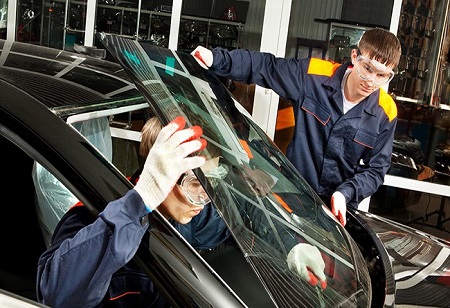In March 2022, when Riley Leon was driving along US Route 290 in Elgin a tornado wind topping 210 kilometers per hour knocked over his pickup truck spun it round and round, and uprighted the truck. Despite the violent thrashing which damaged the truck heavily, blowing out some of the windows, the driver received only minor scratches. This was because the
windshield and rear window remained intact, preventing the driver from being ejected from the vehicle. This story made headlines as Mr. Riley survived a tornado that flung his pickup truck across a highway. Therefore, it highlights the safety engineering which goes into the automotive glass.
Safety – a major design need
While safety is one of the several design needs of
glass for automobiles, the glass that is used here should be clear optically for providing drivers as well as passengers with an undistorted view of their surroundings. The glass should also be strong to resist high-speed winds & impacts from tiny stones during highway driving. Also, the sunroofs & windshields should be structurally rugged in order to support the cabin frame. It should also stop the roof from harming passengers during rollovers.
The glass being manufactured should also be as light as possible in order to optimize the efficiency of fuel and control acoustics for cabin comfort and offer numerous tints & colors for aesthetics.
“Tailoring glass to affordably provide all these functionalities requires striking the right balance among glass properties,” says Thibaut Heitz, director of R&D at Paris-based Saint-Gobain Sekurit, a multinational glass company.
Challenges in the glass composition
Engineers as well as glass scientists fine-tune the composition of the material and customize its properties through chemical strengthening, coating, tempering, and other procedures, for achieving this custom combination of properties.
As a consequence, automotive glass manufacturing is a complicated process. Manufacturers across the world produce an
average of roughly ninety million commercial vehicles as well as cars in the last decade.
Over the years car safety has evolved a lot, the cars before 1904 did not have windshields and they began appearing after 1904. However, they did not become standard equipment until more than a decade later. By 1920, several organizations manufactured laminated glass for windshields but the earlier versions of this glass got discolored most of the time as the plastic interlayer film aged.
The glass found in cars, trucks as well as buses is known as soda-lime glass and is one of the most common kinds which accounts for almost ninety percent of all manufactured glass. For making glass, the glass manufacturers blend the raw materials well and add them to the furnace which heats the mixture above 1500 degrees Celsius to form a molten material and then later shaped into the necessary product.
The soda-lime glass ingredients will comprise a tinting agent which imparts a greenish color to the glass & iron oxide for applications in the automotive industry and the tint helps in decreasing light transmission into the cabin. This reduction leads to making it easier for the driver to have a look at the roads even during strong sunlight. Furthermore, the tint also helps in keeping the interior cool by blocking infrared wavelengths. A cooler cabin leads to less demand for air conditioning which decreases fuel consumption and reduces carbon-dioxide emissions in gas and diesel-powered cars and extends the driving range in electric vehicles.
Recycling
The global automotive glass market is driving recyclers to build innovative ways for reclaiming waste automotive glass & transform it into valuable products, which in turn would help in reducing the environmental footprint of the industry. However, the numerous manufacturing process that tailors automotive glass and renders it with a unique combination of properties offers special recycling challenges, but ones the industry is currently working in order to overcome.
Nearly all glassmakers use cullet to manufacture new products, so the reclaimed windshield glass is readily recycled. What about the PVB? Shark Solutions which is based in Denmark is one of a handful of companies that processes broken windshields and recycles the film. The company which also operates in the US and Belgium purifies the PVB and converts it to pellets and water-based dispersions.
“Interest in recycling windshields has grown in the past few years,” says Cynthia Andela, president, and CEO of Andela Products. “People are focused on sustainability and reducing the volume of material sent to landfills. They see opportunities to recycle windshields into useful materials,” she adds.
Future Scope
The automotive industry is renowned for its experiments. Right from interior colors to exterior designs, everything is tested before the launch of the vehicles in the market. this is possible owing to diverse stakeholders involved in the automotive industry. Furthermore, as glass manufacturing companies provide aerodynamics structure & safety, they have become one of the most crucial parts of the entire automotive and this will continue to grow as demand for automotive has been growing rapidly.
